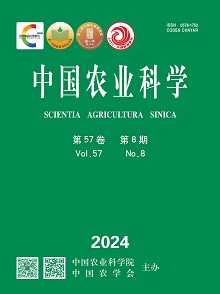【Objective】 The study was to investigate the effects of three factors, including water replenishment, nitrogen application, and pasture type, on the biomass, plant nutrient composition and soil quality of artificial grassland communities by planting artificial grassland with different planting patterns of Hulunber, and to reveal the retreat of Hulunbuir area and the water-fertilizer coupling mechanisms of cultivated land artificial grassland, so as to optimize the mode of planting management. 【Method】 The experiment was carried out at the Hulunber Grassland Ecosystem Observation and Research Station. On June 6, 2016, the experiment began with four blocks, each of which included three test factors pasture types (P) and nitrogen application level (N) and Irrigation (I); forage types included three treatments: alfalfa (P1), awnless brome (P2), and alfalfa and awnless brome 1:1 mixed sowing (P3); nitrogen application levels included no nitrogen (N0), low nitrogen (N1: 75 kgN·hm-2·a-1) and high nitrogen (N2: 150 kgN·hm-2·a-1). The hydration included two levels (I0: no water, I1: hydration). There were 72 test plots, each of which was 7 m×10 m, and the row spacing was 1 m; it replenished the water 3 times every year in June, July and August, and the water per unit area was 20 mm. The nitrogen application (chemical pure urea) was twice in the seedling (returning) and tillering stages, respectively. Grassland biomass, nutrients (plant crude protein, neutral detergent fiber and acid detergent fiber) and soil nutrients (soil total nitrogen, soil organic carbon and soil pH) were measured in 2016 and 2017. 【Result】 (1) The response of (N), (I), (P) and (P×I) to yield in the year of planting (2016) reached a significant level (P<0.05), and two measurements in 2017. The total yield of the production reached a significant level (P<0.05) in response to test factors such as (N), (P), (P×I), (P×N), (N×I×P), and mixed (P3). Under low water (I0) conditions, the yield of low nitrogen (N1) was significantly higher than that of the other treatment groups (P<0.05), with an average of 17 801.19 kg·hm-2. (2) The crude protein content in 2016 and 2017 were P1 treatment>P3 treatment>P2 treatment, in 2016. P1, P2 and P3 treatment showed that the CP content increased with the increase of nitrogen level when the hydration (I) conditions were the same, and P1 was not replenished under water (I0) conditions. The crude protein content under P1N2I0 was significantly higher than that under P1N0I0, P1N1I0, and P1N1I1 (P<0.05), reaching a maximum value of 19.08%; in 2017, under P3 at I0 conditions, the CP content of the lower N1 level (15.12%) was significantly higher than that of N0 (P<0.05). (3) Both nitrogen application and water addition promoted the negative growth of soil SOC content, positive TN content, and negative pH growth. The SOC growth of the topsoil and the bromegrass were significantly higher than that of the mixed seeding (P<0.05), and the TN growth of the topsoil was significantly higher than that of the bromegrass and mixed seeding (P<0.05); under the surface and subsurface of 2016, the ratio of soil carbon to nitrogen (C/N) was higher than that of 2017, the average surface layer was 17.39% higher, and the subsurface layer was 15.18% higher. The carbon and nitrogen ratio of surface soil was more obvious. The surface soil carbon and nitrogen ratio was P1N0I1 in 2016, with the highest value of 8.15; in 2017, the highest value under P1N2I0 was 5.67. The carbon and nitrogen in the subsurface soil was 6.36 higher than that under P1N2I1 in 2016, and the highest under P3N2I1 in 2017 was 5.67. 【Conclusion】 In the second year of planting in Hulunber, the coupling effect of herbage, water and nitrogen fertilizer had a significant effect on the biomass of the grass. The coupling effect of water and nitrogen fertilizer had a synergistic effect on the nutrient accumulation of the grass. The construction of artificial grassland plant could reduce a C/N and soil quality to drop, and adding in different kinds of grass, and water and nitrogen levels all showed the 0-20 cm soil SOC content and pH value were lower and soil TN content increased, indicating that soil acidification occurs, bean-grain mixed soil pH lower amplitude was less than unicast, and high nitrogen and filling water could be reduced to a significantly increased the soil pH value.











